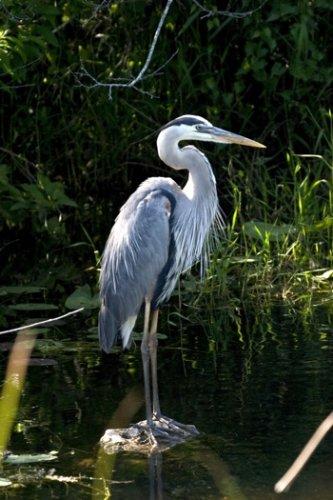While the Bush administration worked to see the United Nations remove Everglades National Park from its list of World Heritage Sites "in danger," the Obama administration applauded the UN's decision to again give the park that tag.
Everglades National Park was added to the United Nations Educational, Scientific and Cultural Organization World Heritage List in 1979 for its remarkable natural resources. However, in 1993 it was placed on the World Heritage Committee's "danger list" due to threats posed by urban growth, pollution, and hurricanes.
Just about three years ago the World Heritage Committee, in a somewhat curious move, unanimously voted to removed the "in danger" tag, saying the United States had made prudent investments of "scientific and financial resources to rehabilitate the site..."
That move was applauded by then-Interior Secretary Dirk Kempthorne, who remarked that he was "gratified that the World Heritage Committee recognized the major commitment the United States has made to restoring one of our nation's and the world's greatest natural treasures. The committee has highlighted our work to restore the Everglades as a model for the rest of the world to follow."
Interestingly, the tag was removed while state and federal officials were working to develop a plan that would restore water flows through the Everglades.
Well, in June of 2009 Interior officials released a statement that said "the Everglades was hastily removed from the list in 2007 at the request of the previous administration without adequate consultations with the National Park Service, the state of Florida and other stakeholders and without appropriate measures in place to evaluate the progress of on-going efforts to restore the South Florida ecosystem."
“The Everglades remains one of our world’s most treasured – and most threatened – places,” Secretary Salazar said at the time during a meeting of the South Florida Ecosystem Restoration Task Force. “The federal government must once again stand up and meet its responsibilities to Everglades restoration so that one day, when we achieve restoration, we can remove the park from the list of sites that in danger. President Obama has already made a major commitment to Everglades restoration in the budget and through the Recovery Act; we will stay focused on this high priority for our nation and the world.”
At the time the Interior secretary called on UNESCO to again pin the "in danger" tag on Everglades.
Well, last week the World Heritage Committee agreed, and put Everglades back on the List of World Heritage in Danger, as it's officially called.
“With the President’s strong commitment to restoration through the budget and through the American Recovery and Reinvestment Act, there is hope for a new day in the Everglades,” Secretary Salazar said in approving the move.
President Obama has substantially increased federal support for Everglades restoration, the largest ecosystem restoration project in history, Interior officials noted.
Yet to be decided is whether the World Heritage Committee will decide that Glacier National Park also needs to be put on the "danger list."
Last fall an international team of scientists visited Glacier and its northern neighbor, Waterton Lakes National Park, to judge whether external threats -- particularly those posed by mining -- endangered the two parks.
The visit was spurred, in part, by petitions from conservation groups that were concerned that proposals to mine the Flathead region north of Glacier and west of Waterton Lakes would greatly impact the region from the flow and quality of its waters to the health of its wildlife. Those concerns were heightened in December after another mining proposal, this one focused on gold, surfaced.
Of course, the decision by the British Columbia government and Montana officials earlier this year to prohibit mining in the Flathead River Basin north of Glacier and west of Waterton Lakes might have made the petitions moot.




Add comment